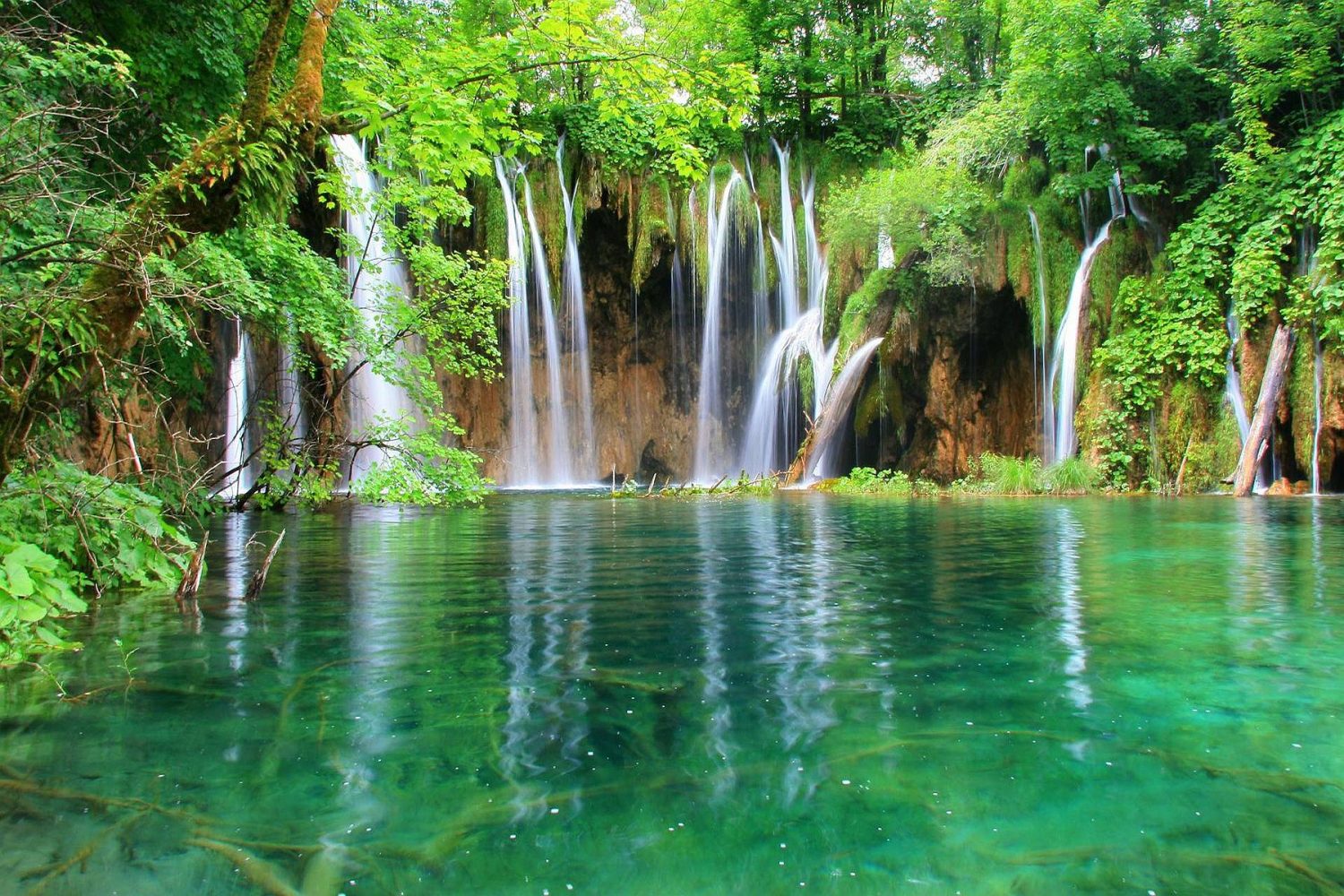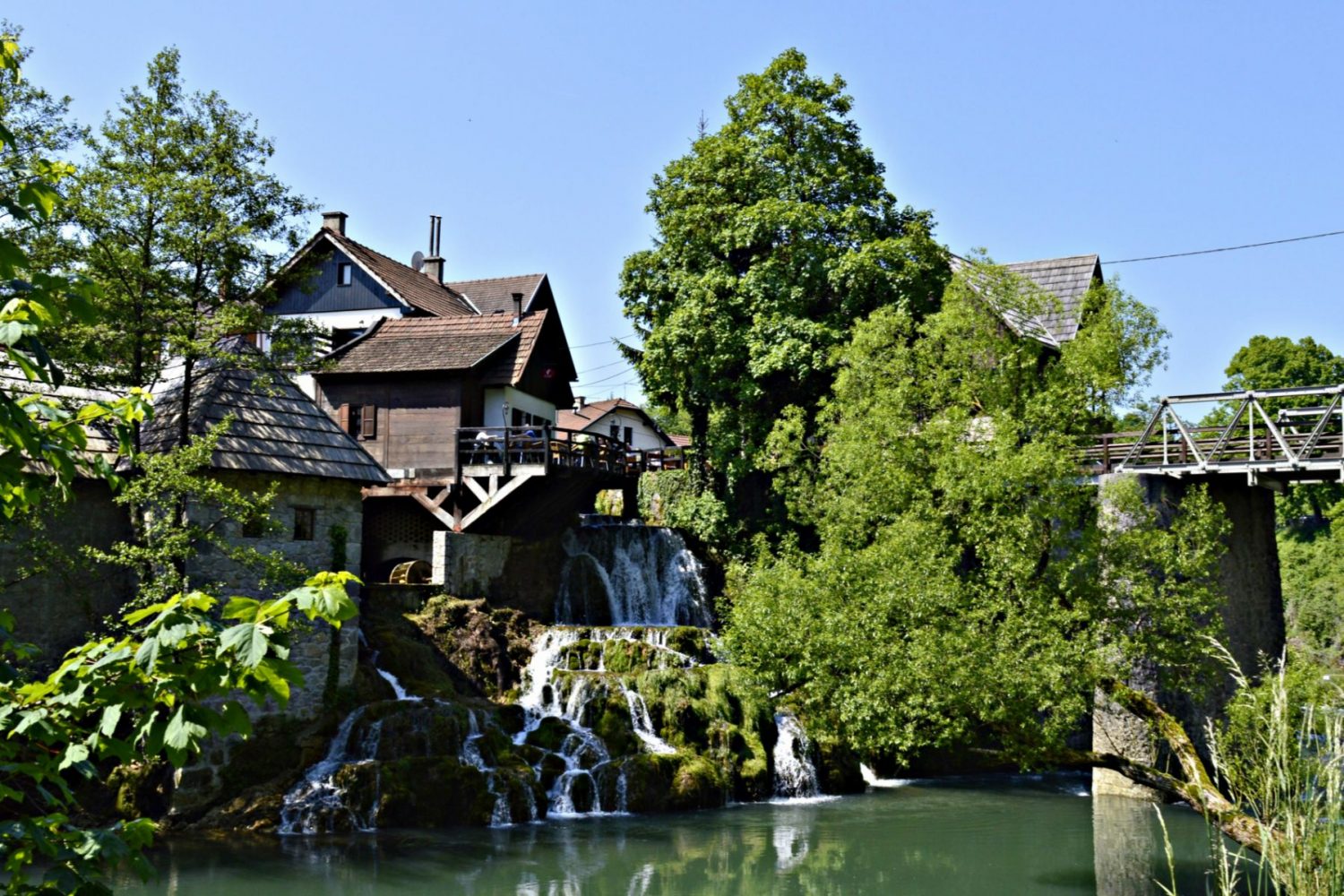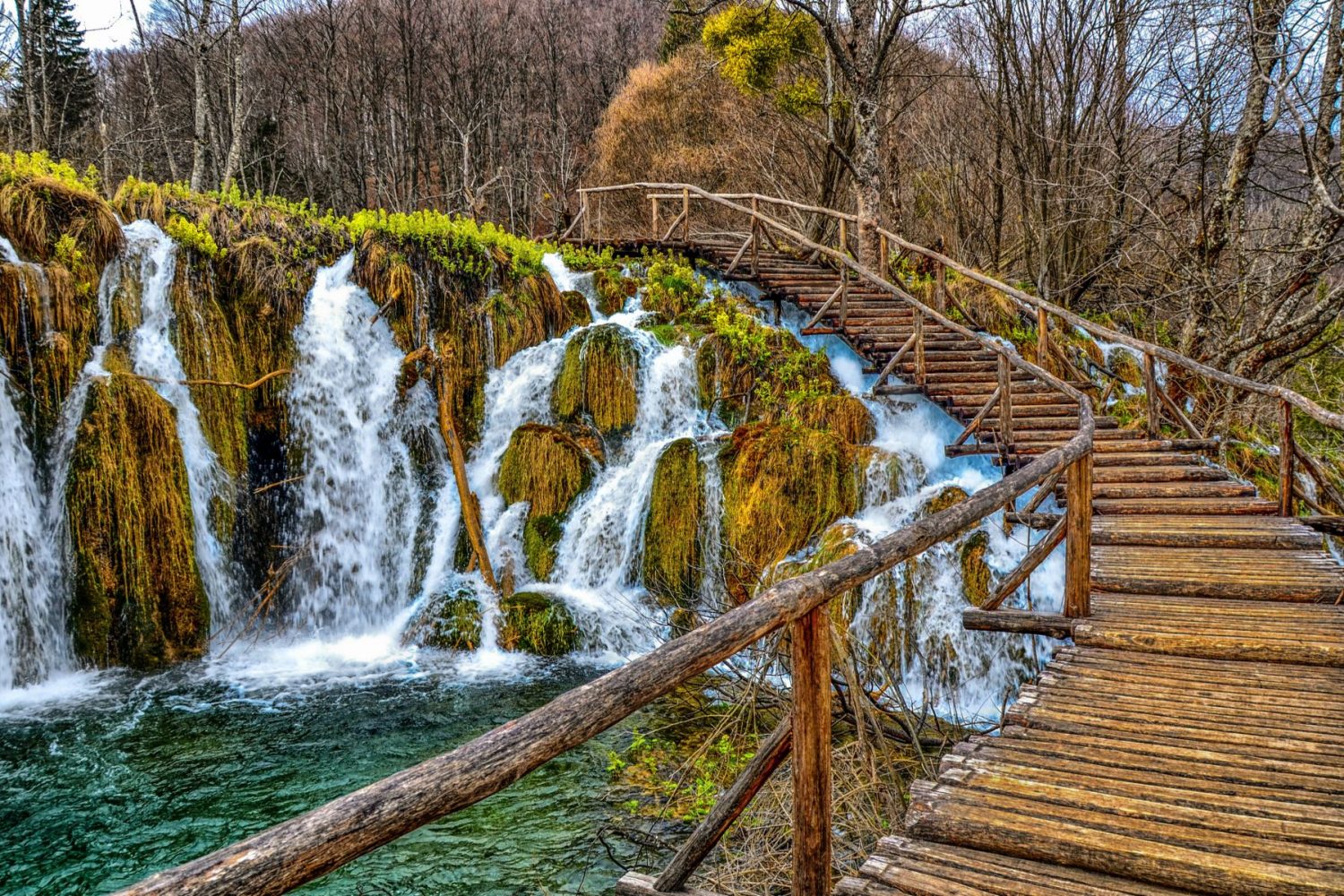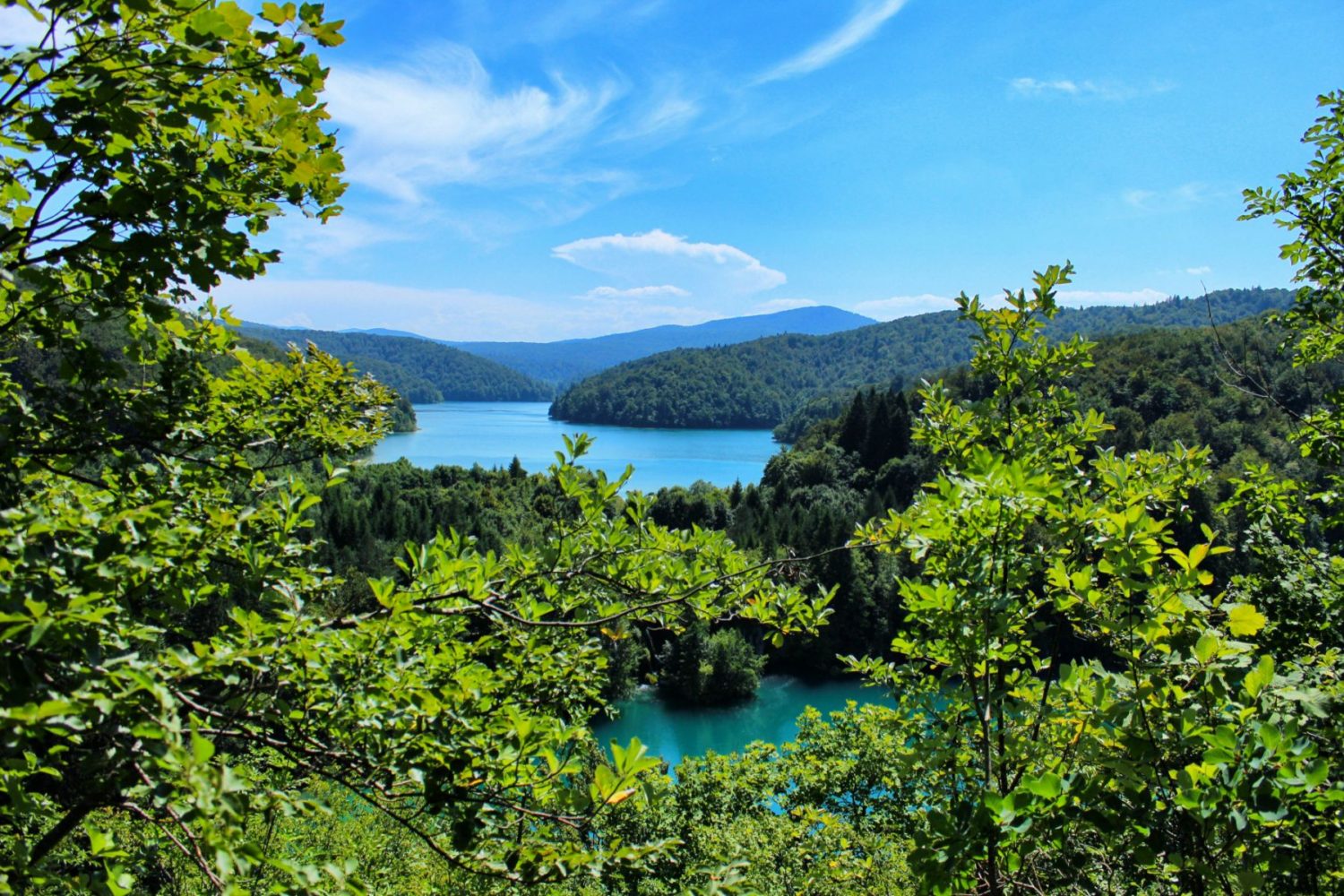Plitvice lakes:
Visit one of the most beautiful natural landmarks in Europe, the oldest Croatian National Park Plitvice. Plitvice has 16 breath taking lakes and numerous waterfalls in a beautiful surrounding of flora and fauna. There is a waterfall called ”Veliki slap” which on Croatian means ”big waterfall”. The waterfall is 78 meters long, and it is the biggest waterfall in Croatia. Plitvice has also 58 species of orchids, among which is the Cypripedium Calceolus, the most beautiful orchid in Europe. Except all of the legally protected and endemic animal and plant species, visitors can enjoy the buildings of traditional crafts and even 114 speleological objects of caves and pits. The area of the National Park is full of residential objects and restaurants. The visitors of the park can hike, ride in an electrical boat or panoramic train, ride a bike or even paddle on the lakes.
The sightseeing of the park is circularly organized, most of the sightseeing is done within a walk on the marked paths along the water. The park also has restaurants and café bars where the visitors can refresh themselves and rest by enjoying the beautiful surrounding of nature and peace, far away from the noisy city.
Rastoke:
Rastoke is a suburb of the town of Slunj.The name Rastoke in Croatian means growing through, which is exactly what the river Slunjčica in the little suburb does. The river flows through the rocks in the river Korana, and in its course through Rastoke where it creates many small lakes, rapids and waterfalls. The most famous are Buk, Hrvoje and Vilina kosa.
Rastoke are an introduction to the Plitvice lakes, that is why they call them ‘’Little Plitvice’’. Plitvice lakes are 33 km away, but they are not functionally connected to them.The suburb tells us about the symbiosis of the fantastic creations between nature and human technical achievements of the past several centuries, and this is about the so-called ‘’mills žličari’’. That was the first time that the primitive machines were not ran by human or animal power. They were built for the use of several millstones for various types of weeds, and with them we find so-called baskets, which were used for rinsing cotton objects and laundry, so we can also call them the original washing machines.
Many waterfalls have been named after the mill owners. In 1860, the linguist and traveller Adolf Veber Tkalčević described Rastoke as an unparalleled scene and he invited the travellers to come, see and admire, describing one of the waterfalls as a huge tile with a large floral pattern, while he called the other one ‘’a huge Roman Fountain di Trevi’.




